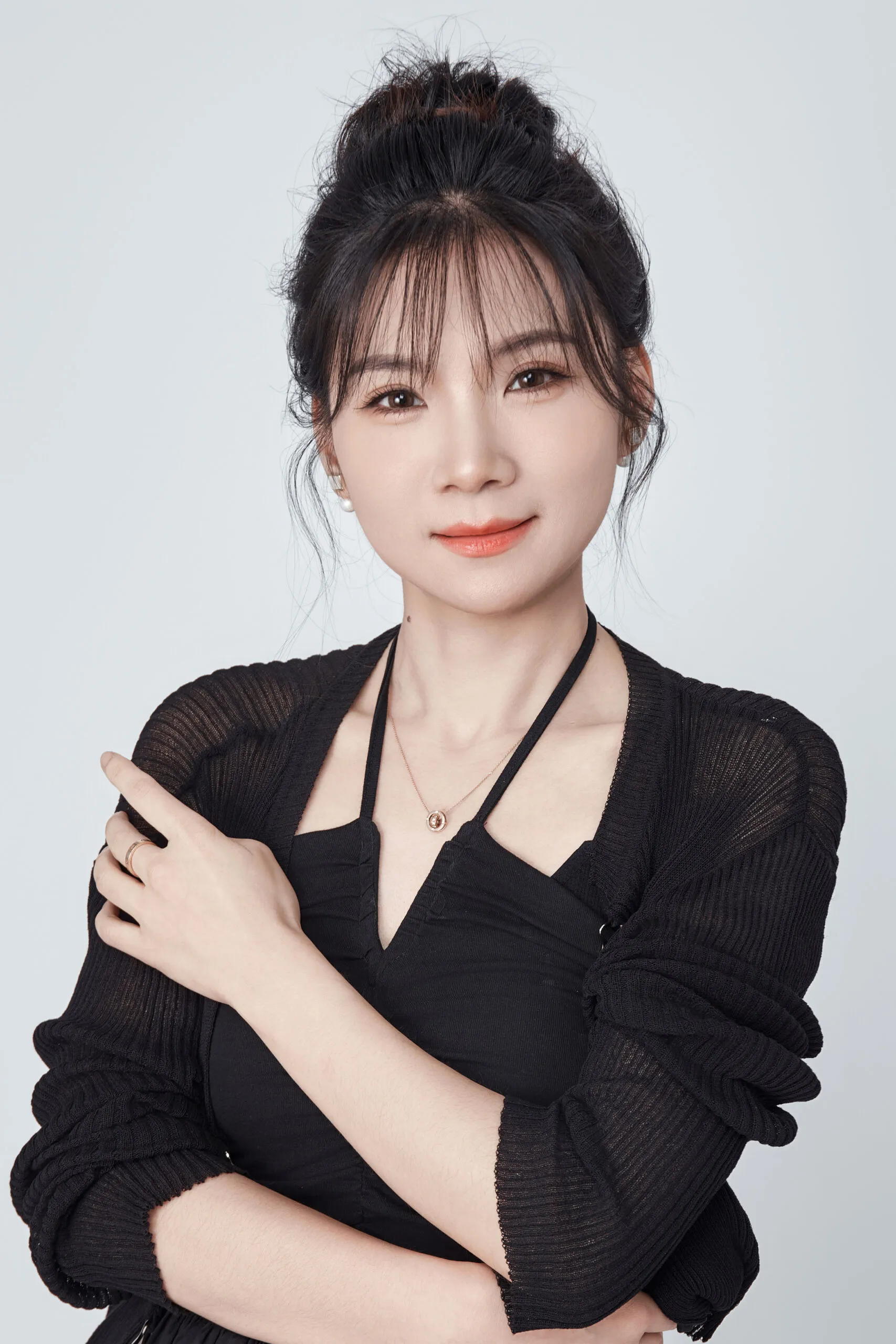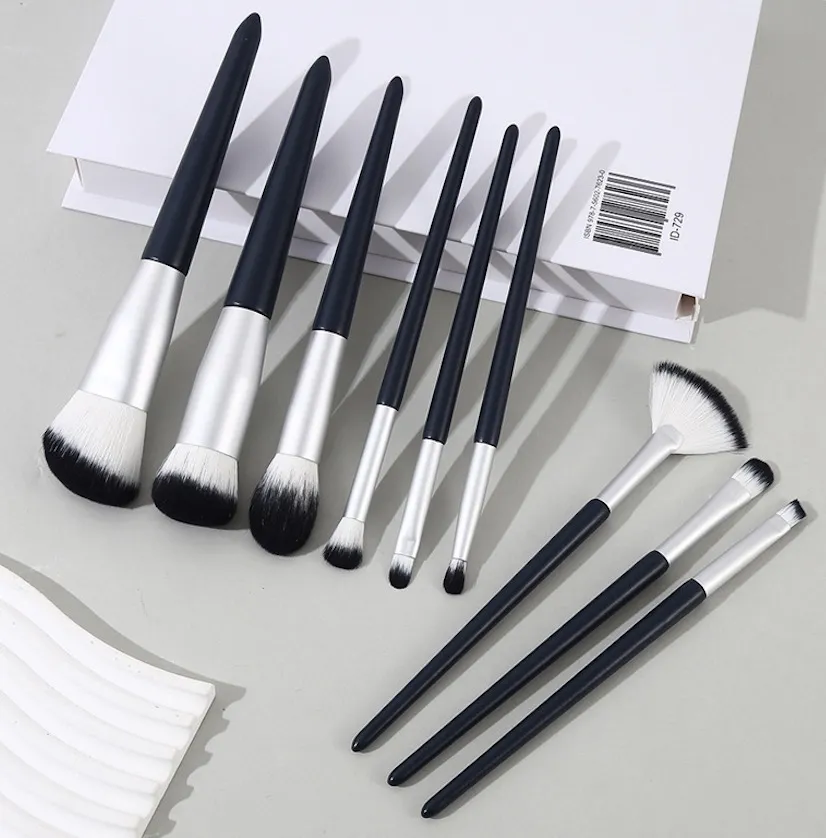Finding reliable wholesale suppliers1 is a huge challenge. You risk wasting time and money on factories that don’t deliver. This guide gives you the data to choose confidently.
The best wholesale makeup brushes are in China (Yiwu/Shenzhen) for low MOQs2 (100–1,000 sets) and fast production (30–45 days). For ultra-luxury, look to Japan/Italy (higher MOQs, 60–120 days). Always verify ISO 9001, REACH/Prop 65, and FSC documents before paying a deposit.

When I first started on the factory floor, I saw firsthand how confusing the world of sourcing can be. So many brand owners, just like you, feel lost trying to find a partner who understands their vision. They struggle with high minimums, slow communication, and quality that doesn’t match the samples. I created Brushino to change that. I want to share what I’ve learned to help you navigate this process, avoid the common pitfalls, and find the perfect manufacturing partner for your brand. Let’s break down exactly what you need to know.
All makeup brush factories in China offer the same quality.False
Quality varies dramatically. It depends on the factory's specialization, quality management systems (like ISO 9001), and the specific materials they use. Vetting is crucial.
You can find reliable makeup brush suppliers with MOQs as low as 100 sets.True
Yes, especially in Chinese manufacturing hubs like Yiwu and Shenzhen, many factories and trading companies cater to startups and indie brands with low MOQs.
Which region is best for your brand: China, Japan, Italy, or the USA?
Choosing a country to source from is overwhelming. A wrong choice can mean paying too much, getting low-quality products, or facing long delays. Here’s a clear breakdown to help you decide.
For startups and DTC brands, China offers the best cost-performance with low MOQs and fast turnarounds. For ultra-luxury, Japan and Italy provide unmatched craftsmanship. The USA is great for brands wanting close collaboration and domestic logistics.
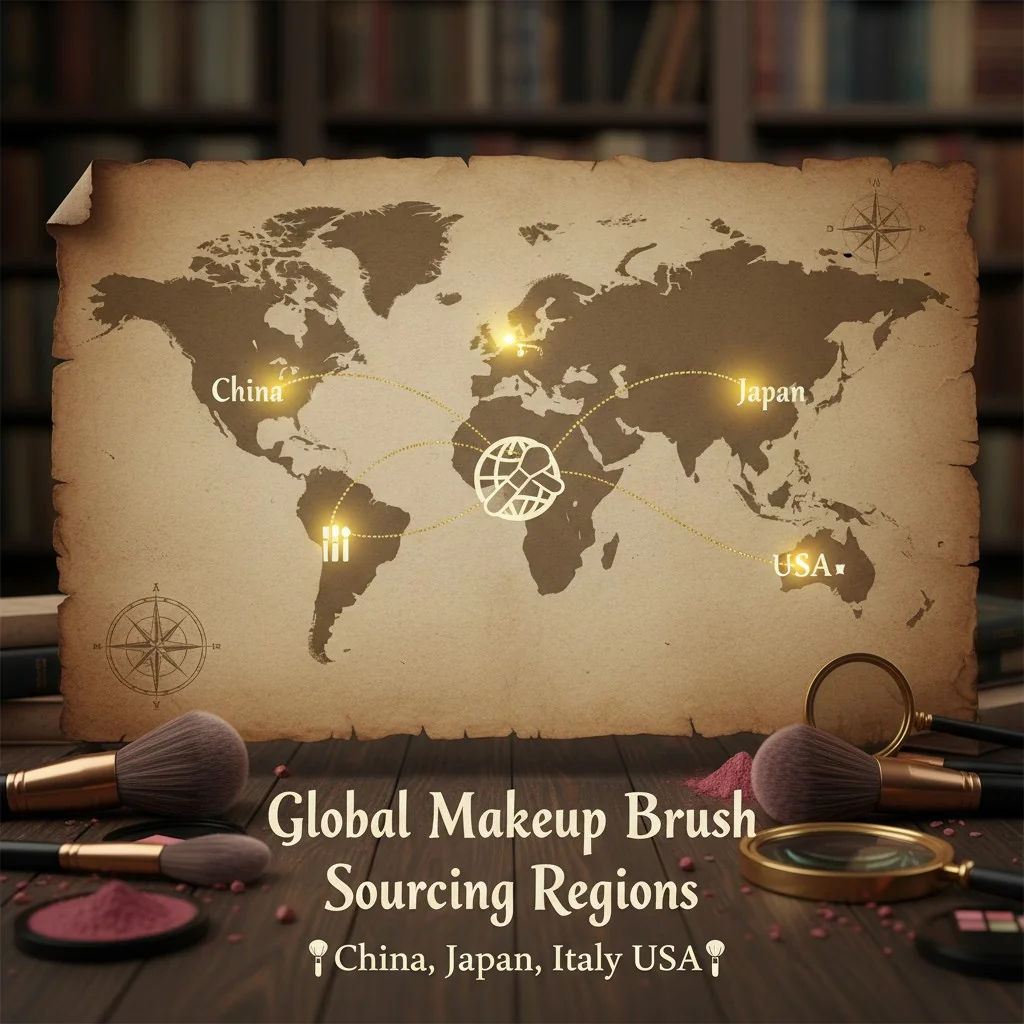
Finding the right manufacturing region is about matching a supplier’s strengths to your brand’s needs. It’s not about which country is "best," but which is best for you. I’ve worked with clients sourcing from all over, and each region has its unique pros and cons. For example, a startup founder like Emily needs flexibility and speed, which points toward specific regions in China. A heritage brand might prioritize the story of Italian design. Let’s look at the data so you can make an informed choice.
Sourcing Region Playbook
- China (Yiwu/Shenzhen/Nanchang): This is the engine for most of the world’s makeup brushes, especially for indie and DTC brands. You get incredible variety in synthetic fibers3 (PBT, taklon) and the best cost-performance. The key is finding a factory that values quality control. This is where we at Brushino are based, because it allows us to offer the flexibility and speed that new brands need.
- Japan (Kumano): This region is famous for its handmade brushes (fude). The craftsmanship is incredible, often using natural hair. This is for the ultra-luxury market. Expect very high prices and long lead times.
- Italy (e.g., Pennelli Faro): Italian suppliers are known for their strong design focus and innovation. They are a great choice for luxury brands that want a "Made in Europe" story and need to meet strict EU regulations easily.
- USA/K-Beauty: Sourcing from the USA offers easier logistics and communication for domestic brands. Korean suppliers are often leaders in design and packaging innovation. Both tend to have higher prices and MOQs than China.
Here is a simple table to compare your options:
| Region | Typical MOQ (Sets) | Sampling Time | Production Time | Price Band | Best For |
|---|---|---|---|---|---|
| China | 100 – 1,000 | 7-14 days | 30-45 days | $ | Startups, DTC Brands, Cost-Performance |
| Japan | 1,000 – 5,000+ | 30-60 days | 60-120 days | $$$$ | Ultra-Luxury, Handcrafted, Natural Hair |
| Italy | 1,000 – 3,000 | 20-45 days | 45-70 days | $$$ | European Luxury, Design-Led Brands |
| USA | 1,000 – 3,000+ | 20-40 days | 45-75 days | $$$ | Domestic Logistics, Close Collaboration |
Japanese brushes are always made with natural animal hair.False
While famous for natural hair, many top Japanese manufacturers like Hakuhodo and Taiki also produce exceptional brushes with high-performance synthetic fibers to meet modern demand.
China is the world's largest exporter of makeup brushes.True
China dominates the global market in terms of volume, offering a vast range of options from mass-market to premium quality, making it a primary sourcing hub for brands worldwide.
What production KPIs should you demand from your brush factory?
You’re worried about production delays and poor quality. Bad brushes lead to customer complaints and hurt your brand’s reputation. Use these key performance indicators (KPIs) to ensure quality and protect your investment.
Target 7–14 day sampling and 30–45 day production from your factory. For quality, your contract should specify glue pull-out strength of over 20N and shedding of less than 3 fibers per 100 strokes.
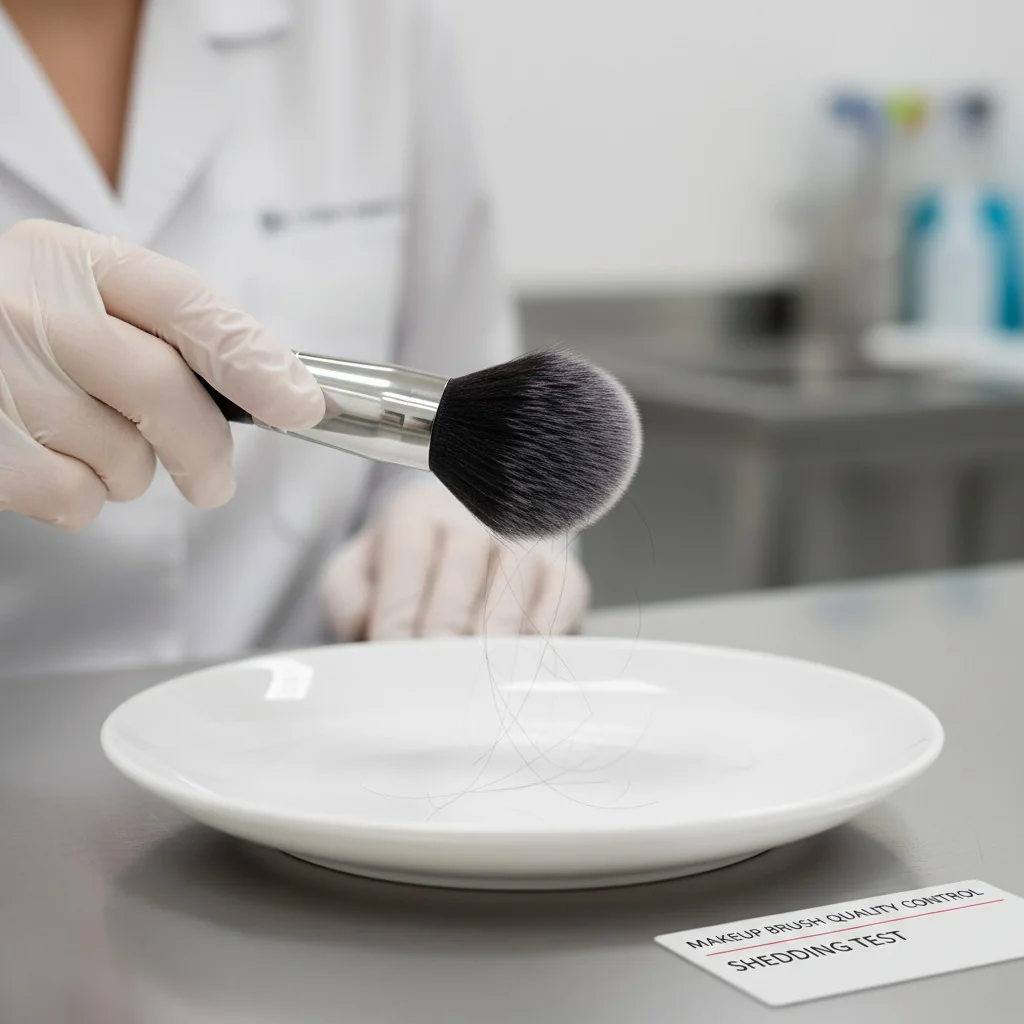
One of the biggest fears for brand founders is that the bulk production won’t match the beautiful sample they approved. I’ve seen it happen. That’s why you can’t rely on promises. You need to define quality with numbers. These numbers, or KPIs, become part of your agreement with the factory. They give you a clear, objective way to measure performance and reject a batch if it doesn’t meet your standards. This is how you move from hoping for good quality to ensuring it.
Setting Your Timeline: Sampling and Production
Speed and reliability are critical, especially if you’re planning a seasonal launch. For most flexible factories in Asia, a sampling time of 7–14 days is a reasonable target. This shows they are responsive and take your project seriously. For mass production, a lead time of 30–45 days after you approve the sample is a good benchmark. Luxury producers in Japan or Italy will be much longer, so plan accordingly. Always get these timelines in writing.
Non-Negotiable Quality Control Metrics
Your Certificate of Quality (COQ) or inspection report should include these tests. Don’t be afraid to ask for them.
- Glue Pull-Out Strength >20N: This tests how strongly the brush head is glued into the ferrule (the metal part). A score above 20 Newtons for face brushes means the head won’t easily fall off during use.
- Shedding <3 Fibers / 100 Strokes: A machine (or person) brushes the tool 100 times on a test surface. Fewer than 3 loose fibers is the professional standard for a well-made brush.
- Ferrule Crimp Integrity: This ensures the metal ferrule is tightly secured to the handle so it doesn’t feel loose or wobbly.
- Dimensional Tolerances: This confirms the brush handle length, ferrule diameter, and bristle length match your approved specifications.
A little bit of shedding from a new makeup brush is always normal.False
While a single stray fiber might escape a new brush, consistent shedding is a sign of poor manufacturing, specifically inadequate gluing or bundling of the bristles.
Production for makeup brushes should never take more than 30 days.True
For standard orders from efficient APAC factories, 30-45 days is a realistic target. However, complex custom designs, large order volumes, or sourcing from craft-focused regions like Japan can easily extend production to 60-120 days.
What compliance documents do you actually need before paying a deposit?
You’re not sure which certificates are real or what to ask for. Using non-compliant materials can get your products stopped by customs or, worse, harm your customers. Here is the exact checklist of documents to request.
Before paying, get the factory’s ISO 90014 certificate. For the product itself, demand recent test reports for REACH (EU) and California Prop 65, plus an FSC certificate for any wooden handles.

This is one of the areas where I see brand owners get into the most trouble. A supplier’s website might be covered in certification logos, but when you ask for the actual documents, they can’t provide them. This is a major red flag. Vague claims like "eco-friendly" or "safe materials" mean nothing without proof. As a brand owner, you are legally responsible for the safety of your products. Getting these documents isn’t just about ticking a box; it’s about protecting your business and building trust with your customers.
Key Documents to Collect
Don’t just ask if they are "compliant." Ask for the specific files. A reliable partner will have them ready.
- Factory-Level Systems:
- ISO 9001: This shows the factory has a quality management system in place. It’s about process and consistency.
- ISO 14001: This shows they have an environmental management system. It’s a good sign for sustainability claims.
- Product & Material Safety:
- REACH: This is for selling in the European Union. It restricts specific chemicals. Ask for a test report on the finished product or key components like paint and glue.
- Prop 65: This is required for selling in California. It requires warnings for products containing certain chemicals. Ask for a test report.
- FSC (Forest Stewardship Council): If your handles are wood, an FSC certificate ensures the wood is from a responsibly managed forest.
- Vegan/Cruelty-Free: Claims like "vegan" need a material declaration stating no animal products were used. "Cruelty-free" is best supported by a certification like Leaping Bunny or PETA, which audits the entire supply chain.
Here is a checklist you can use:
| Document Name | What It Covers | Who Issues It | Applicable Region |
|---|---|---|---|
| ISO 9001 Certificate | Factory’s quality management system | Accredited Certification Body | Global |
| REACH Test Report | Chemical safety of materials (paint, glue, metal) | Third-Party Lab (e.g., SGS, Intertek) | European Union |
| Prop 65 Test Report | Presence of specific chemicals | Third-Party Lab | California, USA |
| FSC Chain of Custody Cert. | Traceability of wood from a certified forest | FSC-Accredited Body | Global |
| Material Declaration | Confirms composition (e.g., "100% PBT fiber") | The Factory/Material Supplier | Global |
An ISO 9001 certificate guarantees every single brush will be perfect.False
ISO 9001 certifies that a factory has a consistent quality *management system*. It doesn't guarantee zero defects, but it significantly increases the likelihood of consistent, predictable quality.
You need to request new REACH and Prop 65 test reports for your specific order.True
While a factory may have old reports, raw material batches can change. For full liability protection, it's best practice to have tests done on the materials used for *your* production run.
What does the market data say about planning for 2025-2030?
You need to plan your product line for the future. You don’t want to invest in a product category or material that is becoming less popular. This data shows you where the market is heading.
The global makeup brush market is healthy, valued between $1.5B and $7.0B and growing around 6% annually. The most important trend is the massive consumer shift toward high-performance synthetic (vegan) fibers through 2030.
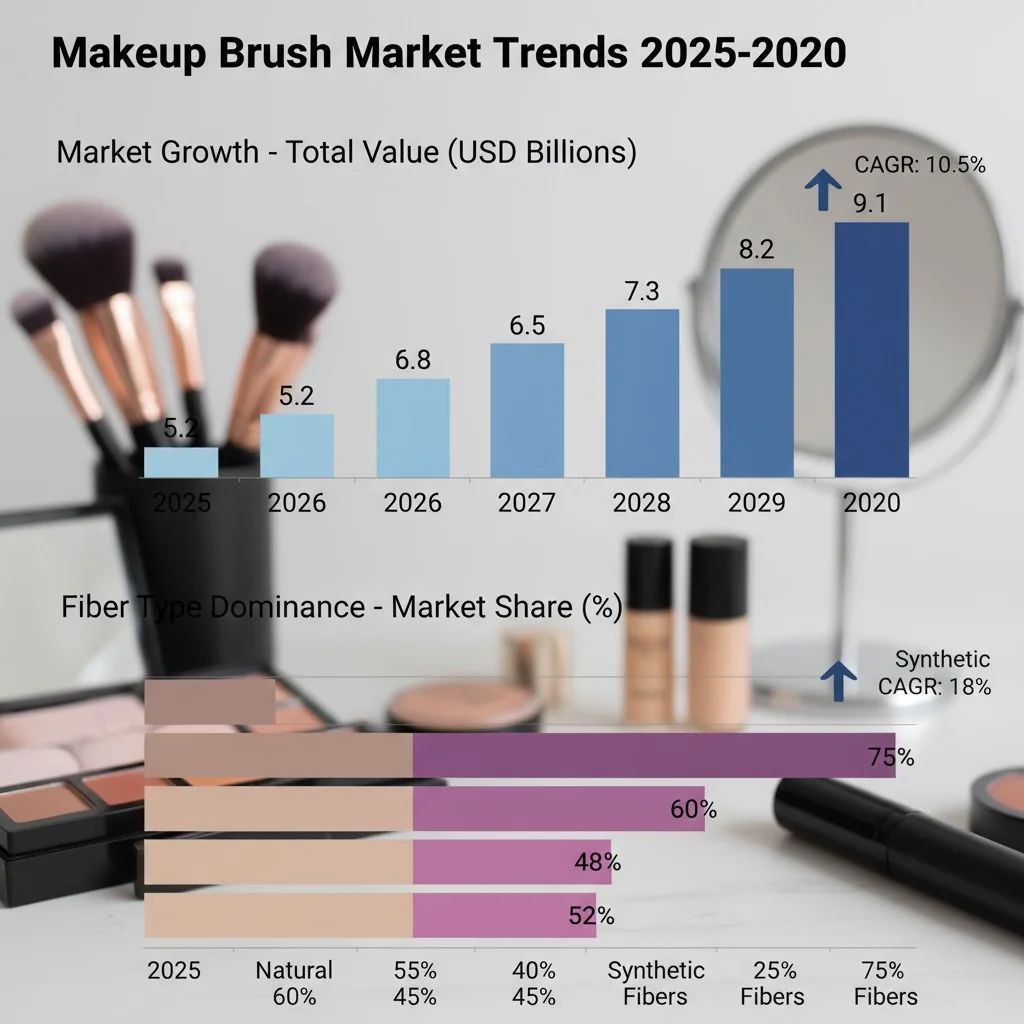
Looking at market data helps you make strategic decisions instead of just guessing. When I advise my clients, we always look at the long-term trends. The numbers clearly show that investing in makeup brushes is a solid bet. The market is stable and growing steadily. More importantly, the data tells us what kind of brushes to invest in. The demand for vegan and cruelty-free products isn’t just a niche anymore; it’s driving the entire market. Aligning your sourcing with this trend is key to future success.
Planning with Market Insights
The numbers can seem confusing because different reports measure different things. Some look at brushes only, while others include all beauty tools. The key takeaway is the same: steady growth.
- market growth5: A Compound Annual Growth Rate (CAGR) of around 6% is very healthy. It means there is consistent and growing demand from consumers for new and better tools. This supports a strong B2B sourcing market for brands like yours.
- The Synthetic Fiber Shift: This is the most critical trend. Driven by the vegan and cruelty-free movement, consumers now prefer synthetic fibers. Modern synthetics, like micro-tapered PBT and taklon, often perform better than natural hair, especially with liquid and cream makeup. They are also more hygienic and easier to clean. Focusing your product development on these advanced synthetic fibers will keep your brand relevant and desirable.
Here is a summary of the key market data:
| Data Point | Scope | 2023/2024 Size | Projected CAGR | Source Insight |
|---|---|---|---|---|
| Market Size 1 | Brushes + Tools | ~$7.0 Billion (2024) | ~6.3% (to 2034) | Broader market view |
| Market Size 2 | Brushes Only | ~$1.5 Billion (2023) | ~6.1% (to 2032) | Focused brush market view |
| Key Trend | Fiber Type | N/A | N/A | Synthetic fiber share is rapidly increasing through 2030 |
The makeup brush market is shrinking due to beauty sponges.False
While sponges are popular, the overall market for brushes and tools is growing at a steady rate of ~6% annually, indicating strong, sustained demand for brushes.
Natural hair brushes are still considered the highest quality.True
For certain applications like powder blending, high-end natural hair (like squirrel or goat) is still prized by makeup artists for its unique texture. However, for most consumers and product types, modern synthetics now match or exceed performance.
Conclusion
Now you have the data to source makeup brushes confidently. Use this guide to find the right partner and build your dream brand with tools that reflect your quality and values.
References
-
Exploring reliable wholesale suppliers can save you time and money, ensuring quality products for your brand. ↩
-
Understanding low MOQs can help startups manage costs and inventory effectively while sourcing quality products. ↩
-
Synthetic fibers are increasingly popular for their performance and ethical considerations, aligning with market trends. ↩
-
ISO 9001 certification ensures quality management systems are in place, crucial for maintaining product standards. ↩
-
Understanding market growth helps in strategic planning and investment decisions for your product line. ↩

